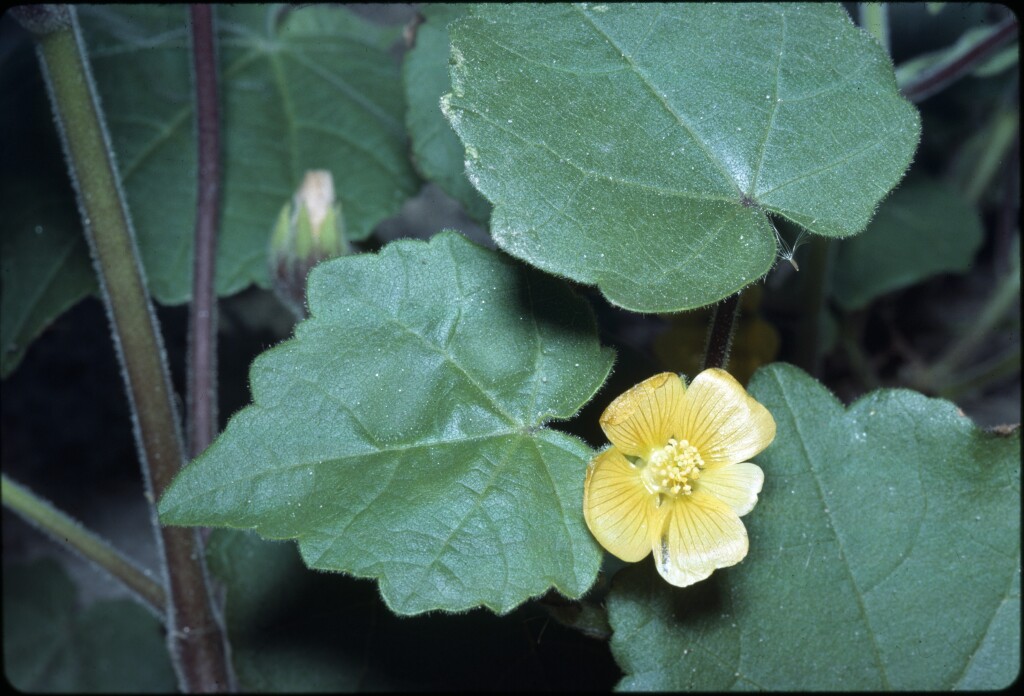Abutilon theophrasti
Medik. Chingma LanternUpright annual to 100 cm tall; branchlets densely tomentose with simple glandular and sessile stellate hairs. Leaves broadly ovate, 1.5–18 cm long, 1.5–16 cm wide, slightly discolorous; base cordate; apex abruptly acuminate. Flowers solitary or in racemes; calyx 5-ribbed, campanulate, 6–10 mm long; lobes ovate, lined on the acuminate to acute apex; corolla yellow, exceeding calyx; lobes 7–8.5 mm long, rounded apically, not ciliate at base; staminal column c. 1 mm long, glabrous; styles 10–12. Fruit blackish, 10–15 mm high, tomentose, adjacent mericarps adhering for three-quarters or more of their surface, tardily separating; mericarps 3-seeded, c. 13 mm high, 5.5 mm wide, with apical awn 2.5–4.5 mm long, pointing outwards or upwards. Flowering late spring, summer and autumn.
LoM, MuM, Wim, VRiv, MSB, RobP, MuF. Naturalised all mainland States. Native to Mediterranean region, Asia. Occurs in clay soil in shallowly inundated areas (e.g. Hattah Lakes, Lake Wallawalla, Kerang, Natimuk areas).
Fibre from A. theophrasti was used in the Americas and India for the manufacture of string, rope and fishing nets, and in addition the oil from the plant can be used as a food source or in the manufacture of soap. It seems likely that this aggressive plant may have been deliberately introduced in the 1800s for these purposes.
Barker, R.M. (1996). Abutilon. In: Walsh, N.G.; Entwisle, T.J., Flora of Victoria Vol. 3, Dicotyledons Winteraceae to Myrtaceae, pp. 335–339. Inkata Press, Melbourne.
 Spinning
Spinning




